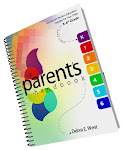Howard Gardner's Multiple Intelligences: Part 4
Below is part 4 of the article on Howard Gardner's Multiple Intelligences written by Thomas R. Hoerr, Ph.D. Makes sure you read the entire article to get all the information. I will be posting parts of the article this week.
While understanding your child's style helps you speak to his strengths, it is also important to give him opportunities to strengthen his weaknesses: Even if you're sure your child is a linguistic learner, there is plenty to be gained from engaging him in spatial or musical experiences. Here's a look at musical, spatial, and naturalist intelligences and the types of activities and experiences children tend to excel at with that learning style:
Musical
What it is: Sensitivity to pitch, melody, rhythm and tone. These children love to listen to and play music, sing, hum, move to the rhythm, and create and replicSinging songs and making audio tapes can be the best way to engage your child in activities.
To teach your musical learner math concepts, have her count drum beats or make musical patterns with an instrument. Provide plenty of instruments to explore (including kitchen utensils to bang!), a tape recorder, and a variety of songs and sounds to listen to.
Spatial
What it is: The ability to perceive the world accurately and to re-create or transform aspects of that world. These learners doodle, paint, draw and build with blocks. They also enjoy looking at maps, doing puzzles and mazes, and taking things apart and putting them back together.
Showing your child photos and pictures will help him grasp new information better than verbal explanations. To involve him in science experiments, ask him to draw his observations. Provide plenty of books with bright, bold graphics, as well as a variety of art materials for your child to explore.
Naturalist
What it is: Recognizing and classifying the numerous species, the flora and fauna, of an environment. These kids like to spend time outdoors observing plants, collecting rocks and catching insects, and are attuned to relationships in nature.
When possible, use photos and books about animals and the natural world to explain topics. Going outside to observe concepts in action — cause and effect, for example — is the best way to teach a naturalist. A terrarium, microscope and bird feeder are good items to offer your little naturalist.










0 comments:
Post a Comment